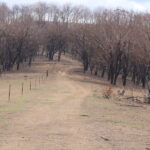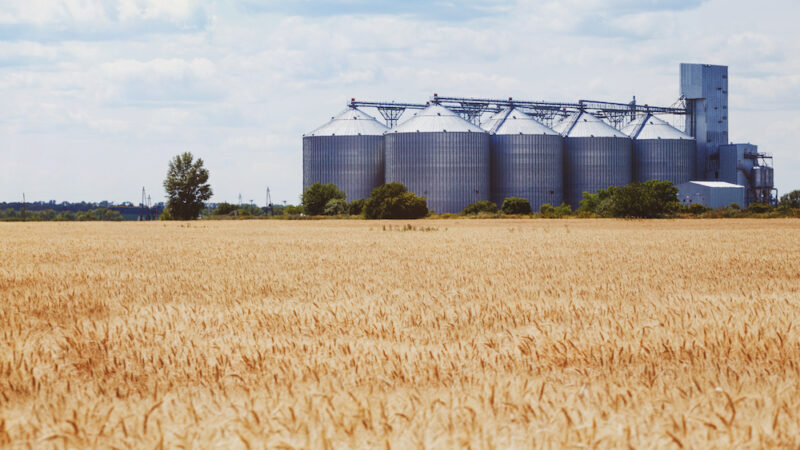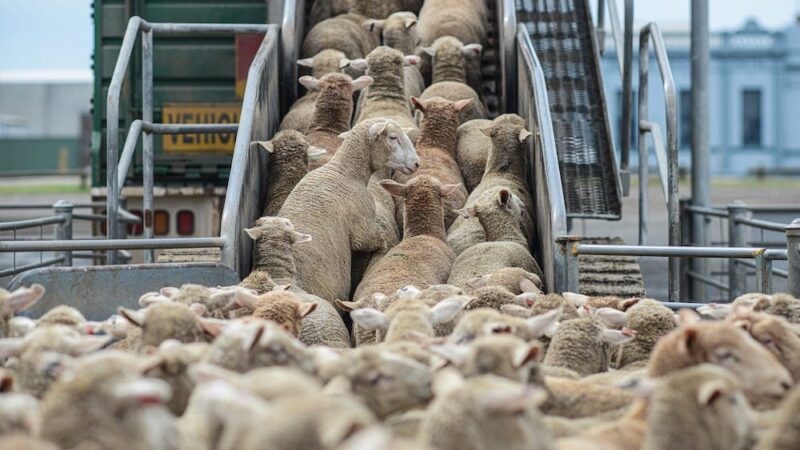The states peak farming organisation has handed a list of key NSW Budget requests that…
The future for Port Stephens oysters
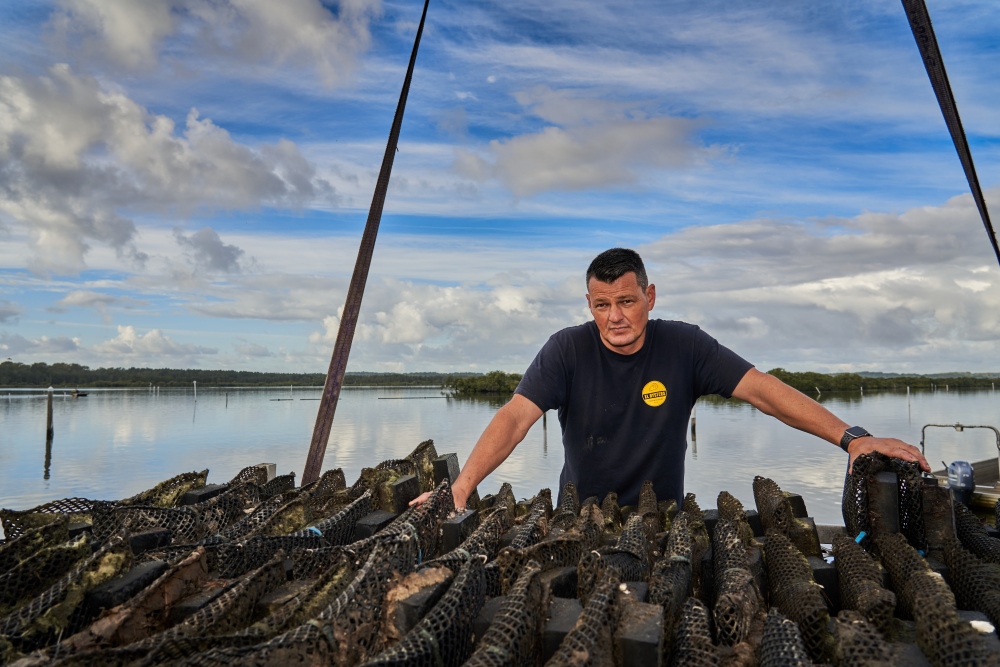
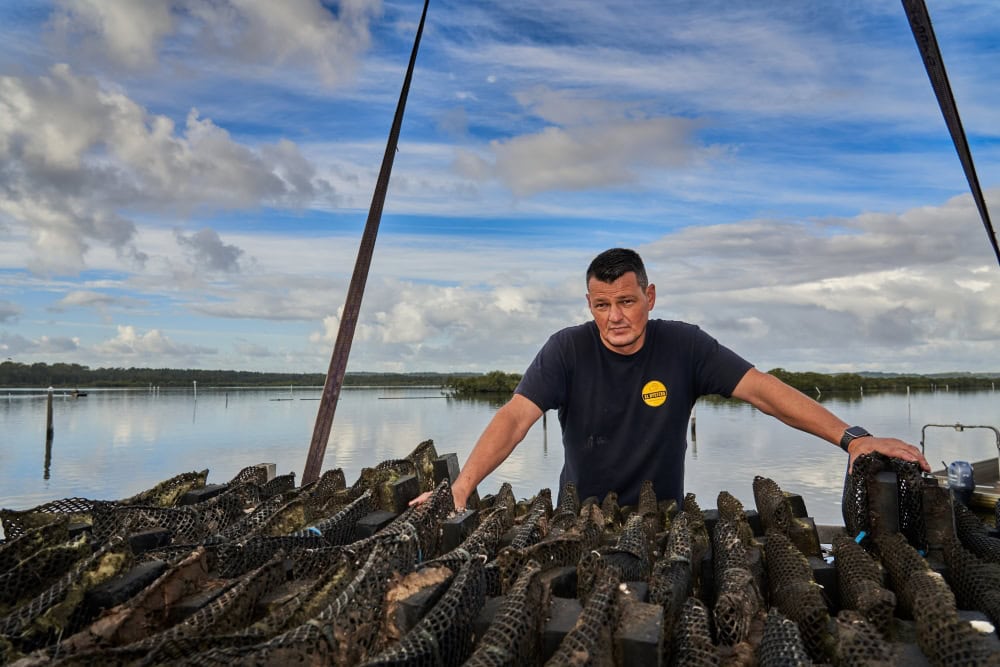
Imagine losing your entire herd of cattle to a mystery cause, or finding a mob of merinos dead in your paddocks due to a disease. That is what Port Stephens oyster farmers have been facing, with millions of dead oysters across 800 hectares of leased estuary paddocks in the last two years.
The devastating QX parasite wiped out the region�s Sydney Rock oysters in 2021-2022, and hopes of a plump Pacific oyster harvest this year were dashed due to an unknown enemy causing mortality rates of up to 100 per cent.
It has truly tested the resilience of the historic Port Stephens oyster industry, with some growers forced to sell leases and close down oyster retail shops.
But just like their fellow farmers on the land, oyster farmers such as Matt Burgoyne from Tilligerry Creek are determined to overcome the mightiest of challenges and revive their businesses with �window farming� Pacific oysters and disease-resistant young oysters or spat.
�Our industry is on its knees but there are plans to get back up,� says Matt. Those plans focus on breeding up stocks of a Sydney Rock oyster found in the Richmond River that has shown signs of QX resistance and �window farming� of Pacific oysters during low-risk mortality conditions.
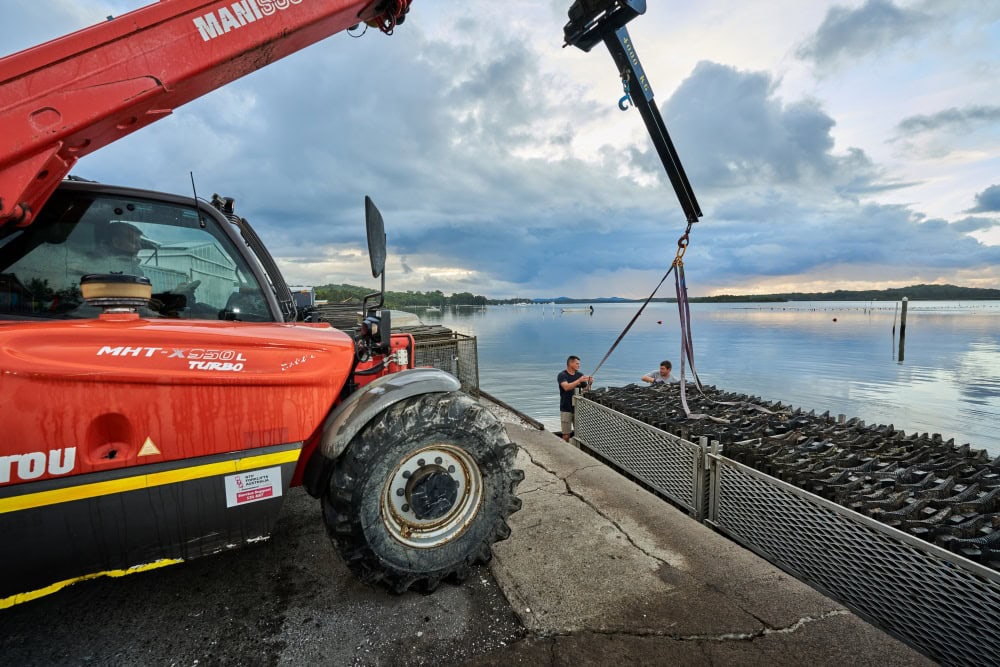
The Port Stephens� industry was once dominated by Pacific oysters until a widespread mortality event in 2013 and 2014 that remains unexplained to this day.
Farmers made the switch back to Sydney Rock oysters, which take three to four years to �fatten� compared to around one year for Pacific oysters.
Pacific oysters are resistant to QX, but they are susceptible to Pacific Oyster Mortality Syndrome (POMS) � a disease that has not been detected in Port Stephens� estuaries.
�We believe the QX parasite outbreak in 2021 and 2022 was related to flooding and that fresh water hung around for so long, causing the oysters to have weak enough immune systems for the parasite to attack,� Matt explains.
�On the back of that outbreak, we needed the Pacific oysters to come through as a win for us. The industry was down to around 10 per cent of normal production by September last year.
�A lot of farmers had to get off-farm employment and were working a hybrid in the hope they could revive their oyster farming businesses.�
Matt said it was a risk given farmers had experienced the unexplained mortality event with Pacific oysters in 2013.
�Spat from wild caught Pacific oysters has been performing much better since then, and with predictions of a cooler summer, we thought there would be a chance of getting a good crop through.�
Matt said he and other farmers were inspired by �unbelievable� growth rates from �teenage� spat bought in from Tasmania.
�We went away for Christmas thinking the oysters are looking fantastic and we would get some income back in.
�One farmer then said he started to see some mortality and it just snowballed from there with baskets of empty shells turning up everywhere.
�A lot of us were growing diploid Pacific oysters because they are the most robust against POMS. Most of those did not survive, with some farms experiencing 100 per cent mortality.
�We also had some triploids as well to split the risk, which seem to have fared better with survival rates of 30 and 40 per cent.�
Diving into the investigation
NSW DPI Fisheries and University of Technology Sydney (UTS) researchers have been hot on the trail investigating the cause. Some farmers are pointing the finger at warmer water temperatures, while UTS research has discovered an unusual bacterium in some oysters.
�The jury is still out,� said UTS Senior Research Fellow Penelope Ajani. �There is nothing out of the ordinary that we have found, except for some bacteria that was noted in the oysters.�
Penelope says bacteria was also found during water testing, but it cannot be blamed yet as the cause of the mortality.
�We are not sure whether the bacteria came in as a result of the oyster dying or whether it was already present, so we will be running some tests on the bacteria.�
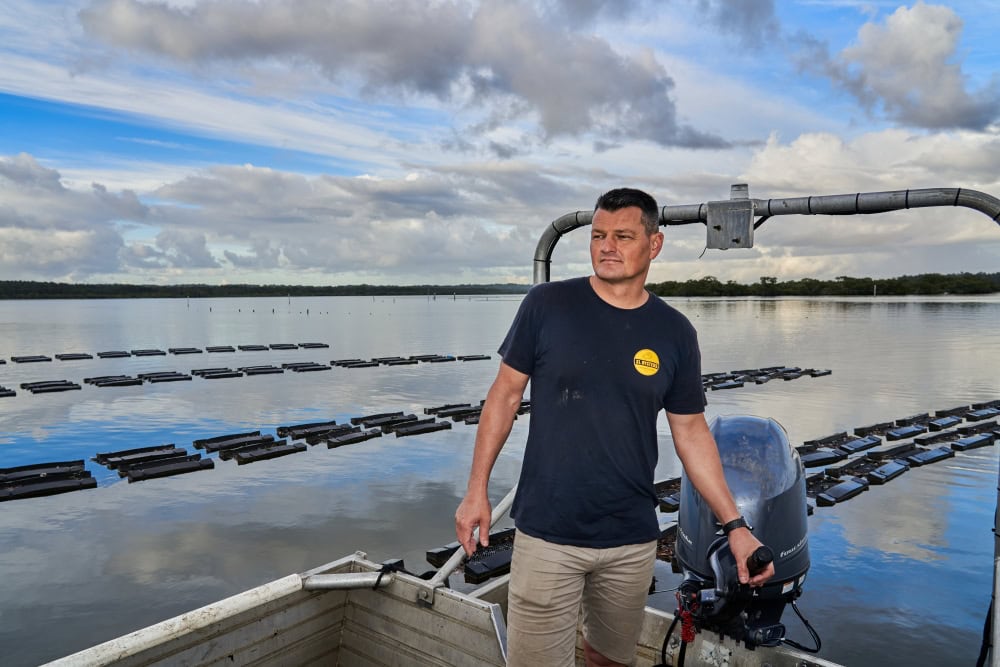
Sticking with Pacifics
Matt said they have not given up growing Pacific oysters and will test fattening older spat during windows of low mortality risk and lower water temperatures.
�Right now in Port Stephens, it�s a challenging business model to grow a Pacific or Sydney rock oyster from spat right through.
�We are hoping that the Richmond River oyster will be that new longer term business model for Sydney Rock production.
�In the meantime, we were looking at window farming Pacific oysters when the risk of infection or mortality is low. That means bringing in spat that is 20 millimetres in size and around four months and having oysters all gone and sold by December.�
The triploid Pacific oyster spat was being sourced from hatcheries in Tasmania via oyster nurseries in eastern states, but Matt said that spat has also suffered high mystery mortality rates.
�We had ordered 1.5 million oysters, but virtually all of them have died. Luckily, we were able to source some other Pacific spat, but it is only 2mm in size and the opportunity for window farming is shut this year.�
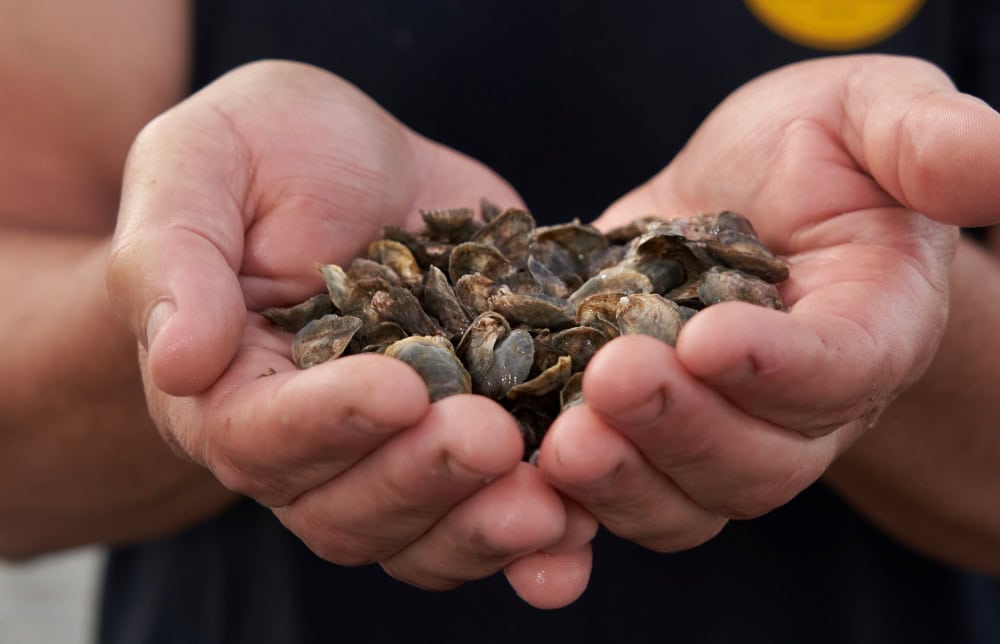
Karuah oyster farmer Dean Cole started restocking his farm with two million baby spat sourced directly from Tasmania in late April.
�We are hoping for the right Sydney rock oyster to come along, but we need to generate some income in the interim with Pacific oysters,� Dean said.
Dean and brother Stephen run the family business Cole Bros Oysters, which was hit by a mortality rate of 95 per cent in its diploid Pacific oyster stocks. The QX outbreak in 2021 had already led to the closure of their popular Cole Bros Oysters shop in Karuah.
�Around 200,000 of the triploid Pacific oysters survived though, and we were able to sell some oysters this year.
�Triploids are our best bet in the short term, particularly as more oysters with stronger POMS resistance become available.�
The future of the Coles Bros Oysters shop is uncertain, but like Matt, Dean is resolute about reviving the family oyster business with the help of NSW Farmers Oyster Project officer Andy Myers and Hatchery Stock Support officer Todd Graham.
�We have to focus on being farmers and not retailers as well, for the next 12 months. Having the support of NSW Farmers, the oyster committee and people like Andy and Todd are allowing us to do that.
�We can�t walk away from this business. For a start, it would cost us around $300,000 to remove all the infrastructure, but it is mainly because the staff are all family, and we have the next generation keen to keep it going.�
Could Richmond River oysters be the Sydney Rock saviour?
A naturally occurring oyster from the Richmond River could be a game-changer for the NSW oyster industry, according to NSW Farmers Hatchery Stock Support officer Todd Graham.
Todd�s role is to work with farmers, hatcheries, nurseries and the NSW DPI to improve access to spat across the supply chain. That includes facilitating the collective purchase of spat for small and medium sized oyster farms.
�Oyster farmers right across the north coast are on the hunt for spat after flooding and disease impacts.
Similarly, parts of the south coast are still in recovery mode too after floods and fires,� Todd says.
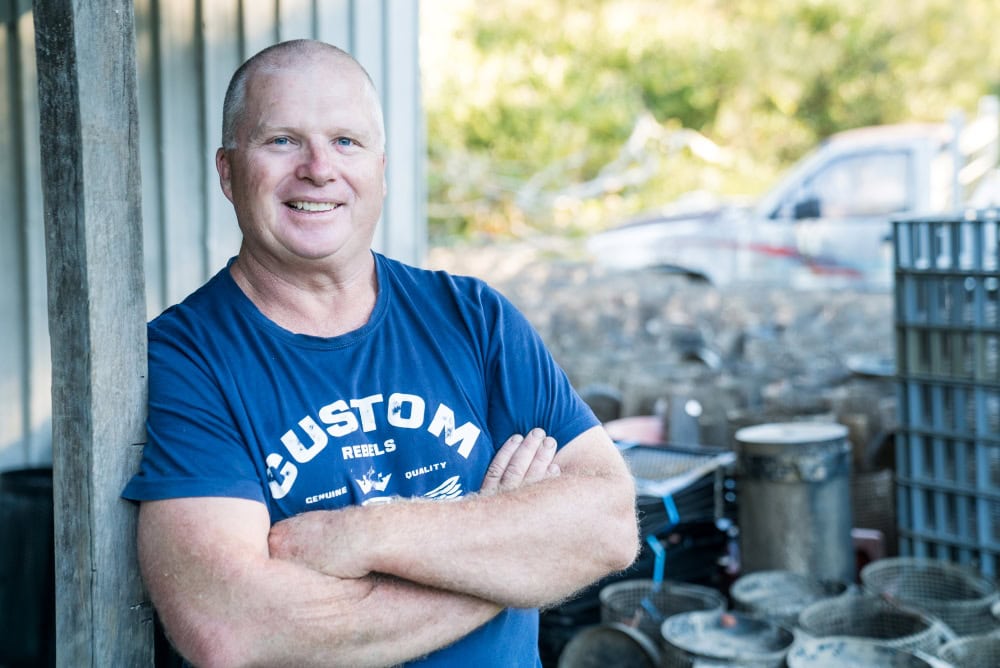
Todd is also an oyster farmer and is trialling the Richmond River oyster on the Macleay River, which has also been affected by QX disease.
�The Richmond River oyster family lines have a lot of oyster farmers excited. It�s a naturally occurring QX-resistant oyster,� he says. �They also seem to perform well in poorer water quality conditions.
�All the wild caught oysters had disappeared from the Richmond River, then an oyster farmer found them again about five years ago.�
The challenge for the industry now is to breed up mass amounts of spat. Attempts this year to fast track commercial production of spat for farmers in NSW have failed. �The hatchery managers are on a learning curve with the Richmond River oysters. They seem to prefer cooler temperatures at the hatchery stage than other Sydney Rock oysters.�
Matt, who is chair of the NSW Farmers Port Stephens Oyster branch, and Cole Brothers Oysters are also trialling the QX resilience of the Richmond River rock oyster and early results are promising.
�Todd gave us some spat that we put in just after Christmas, so we are right in the middle of our QX infection period,� Matt says.
�They are performing well. We are also going to try a QX-resistant oyster developed by the DPI in May that will already be 15 months old. We will see how they go through an infection period and get them in condition for sale in 2024.
�It�s a long play to sustain our family business � if we have oysters that survive, we can rebuild our business. It�s something we want to do, as for us personally, we love farming oysters and it�s been in our family for 67 years.�
Footnote: The NSW Farmers Hatchery Stock Support officer role is funded through The Early Needs Recovery Program, which is part of the $150 million Primary Industry Support Package co-funded by the Australian and NSW Governments.



